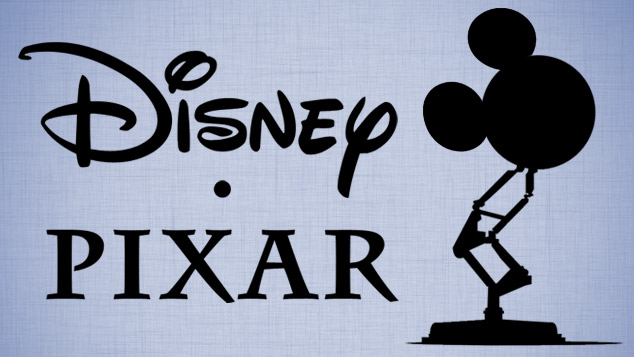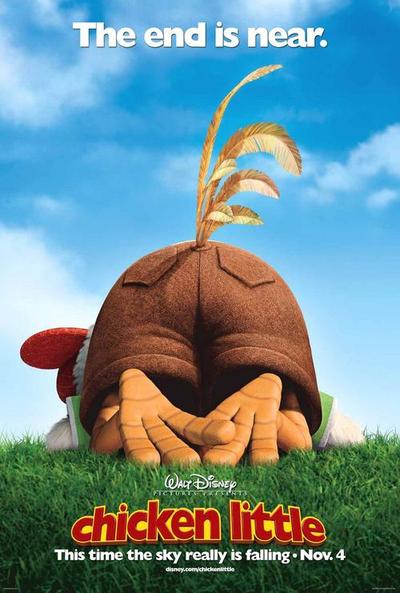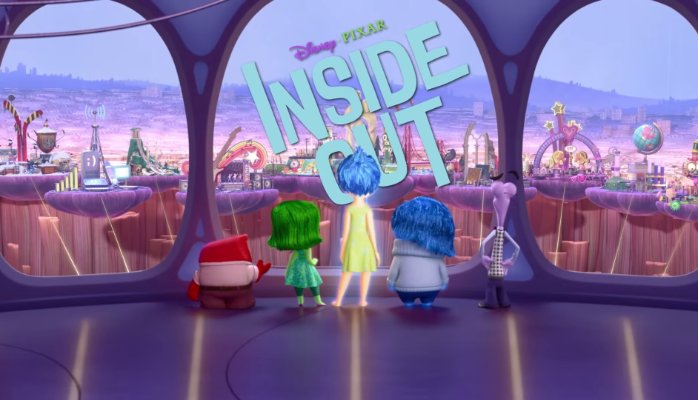Perhaps the most well respected animated film studio in America is Pixar Animation Studios. The famed studio made history with their premiere film Toy Story, which also doubled as the first feature length computer generated film of all time. Since then, they’ve had critical and commercial success with nearly every last film of theirs. Nearly all of their stories are original works that transcend both time and age. For 15 years since they’d made their illustrious debut, their work has been consistently beloved by all. Per Rotten Tomatoes, here is the critical reception (Tomatometer & Average Critic Rating score) for their filmography for their first 15 years:
1995: Toy Story 100% 9.0/10 (<100 reviews)
1998: A Bug’s Life 92% 7.9/10 (<100 reviews)
1999: Toy Story 2 100% 8.6/10
2001: Monsters, Inc. 96% 8.0/10
2003: Finding Nemo 99% 8.6/10
2004: The Incredibles 97% 8.3/10
2006: Cars 74% 6.9/10
2007: Ratatouille 96% 8.4/10
2008: WALL-E 96% 8.5/10
2009: Up 98% 8.7/10 [Nominated for Best Picture]
2010: Toy Story 3 99% 8.9/10 [Nominated for Best Picture]
No other studio has a track record as good as this one except for maybe Studio Ghibli. However, over the last five years, Pixar’s reception has been noticeably less consistent than previous years. Their recent output has looked like this:
2011: Cars 2 39% 5.5/10
2012: Brave 78% 6.9/10
2013: Monsters University 78% 6.8/10
2015: Inside Out 98% 8.9/10
2015: The Good Dinosaur 77% 6.5/10 [First box office bomb]
2016: Finding Dory 94% 7.7/10 (as of 6/30/16)

For an explanation on how Pixar’s once illustrious track record has become more diluted in recent years, I think we have to take a look back at 2006. In 2006, brand new Disney CEO Bob Iger secured a deal to purchase Pixar for $7.4 billion. The New York Times ran a feature on the Disney/Pixar merger two years later to recount what effect it had on the animation maverick. While most of what had been written described a positive relationship, there were also some philosophy changes that Pixar had undergone. One big shift was the company’s attitude towards sequels:
“We are definitely planning on doing more sequels, just as we are more originals,” [Pixar co-founder, John] Lasseter said in an interview. “We talk with Bob Iger about which ones make sense to do from a business perspective. But each movie has to be absolutely great or you will snuff out a franchise.”
Come April 2008, John Lasseter announced sequels to Cars, Monsters Inc., and Toy Story. While Cars had been considered one of the weaker films in Pixar’s catalog, its merchandising success was undeniable. According to the 2008 NY Times feature, Cars received $460 million in ticket sales, 27 million DVD sales, and generated $5 billion for related retail items. It isn’t a (home)stretch to think that a Cars sequel made a lot of sense from a business perspective. Furthermore, while John Lasseter, director of the first two Toy Story films, understands each movie has to be great, his role had received many more responsibilities with the Disney/Pixar merger. Shortly after the Pixar acquisition, Disney made Lasseter the Chief Creative Officer of Walt Disney Animation Studios in addition to his existing role at Pixar.
He also has new corporate responsibilities, from schmoozing with important investors to helping to push Disney’s efforts with high-definition Blu-ray DVDs. All of this juggling, some people say, has made him somewhat inaccessible. One Pixar insider, who requested anonymity because he was not authorized by the company to speak, joked that scheduling a meeting with Mr. Lasseter has become harder than “lining up a chat with the pope.”
Similarly, John Lasseter wasn’t the only one receiving a busier schedule. For the first time in Pixar’s history, they announced two projects in development for release in the same year. The original slate of films from 2011 and beyond looked like this:
2011: Newt
2011: The Bear and the Bow (retitled Brave)
2012: Cars 2
2013: Monsters, Inc. 2 (retitled Monsters University)
2014: The Good Dinosaur
Pixar fanatics may notice that the first film never seemed to get a theatrical release. That’s because Newt was Pixar’s first cancelled production. To sum it up, Newt was a Pixar film focused on the last two blue-footed salamanders on Earth who can’t stand each other. The problem with this premise is that it bore an uncanny resemblance to 20th Century Fox animated film, Rio: a 3D CG (computer-generated) animated feature about blue macaws who need to put aside their differences for the survival of the species.
In an effort to solve these story issues, Newt was delayed to 2012. Unfortunately for Pixar, they were unable to make the story work and had to cancel the project to preserve the studio’s creative integrity. Since each Pixar film cost about $200 million, this was a devastating business move for the studio. From this single cancellation, a ripple effect took place: Cars 2, already in production trouble, had to move up to 2011 and resort to John Lasseter’s intervention. Because of this delay, The Bear and the Bow had to move be postponed two years from its original date to 2013. Furthermore, troubled waters surfaced with The Good Dinosaur and resulted in its movement from 2014 to 2015, effectively vacating 2014 from any Pixar releases. Moreover, The Good Dinosaur’s delayed production for a complete overhaul in story caused the closure of Pixar Vancouver Studios and resulted in 80 layoffs. All three films that moved around in the schedule suffered mediocre-to-negative reviews and The Good Dinosaur became the first Pixar film to lose money at the box office.
Meanwhile, Walt Disney Animation Studios began to experience a resurgence in the critical reception of their films. From the same timeframe, we’ve seen Disney’s 3D CG animated catalog go from divisive at best to immensely popular critical darlings. Look at this turnaround for Disney’s 3D animated films after the merger:

2005: Chicken Little 36% 5.5/10 (before merger or John Lasseter’s CCO involvement)
2007: Meet the Robinsons 66% 6.3/10
2008: Bolt 89% 7.2/10
2010: Tangled 90% 7.5/10
2012: Wreck-It Ralph 87% 7.5/10
2013: Frozen 89% 7.7/10
2014: Big Hero 6 89% 7.3/10
2016: Zootopia 98% 8.1/10 (as of 6/30/16)
Disney’s acquisition of Pixar and John Lasseter’s services seem to have had a much more positive effect on Walt Disney Animation Studios than Pixar. Nevertheless, let me be clear: I am not trying to say that Disney is the bad guy. I am in no way suggesting that Disney bought Pixar to steal their talent and become a better animation studio than them. However, the way that Pixar Animation Studios is working now seems to be a different way that it was working before the merger. The increase in the production of sequels is the obvious difference, but the most overlooked difference is the increased production schedule. Releasing two Pixar films in a single year has lost the studio their money twice (with the cancellation of Newt and The Good Dinosaur’s poor box office) and caused as many as three films to receive less-than-stellar reviews. From a single production failure, it seems to have had an adverse effect on Pixar’s output at the turn of the decade.
On the other hand, Newt wasn’t all doom-and-gloom for Pixar. During the production of Newt, the Pixar brain trust decided to bring in Pete Docter, director of only one of three animated features to ever get nominated for the Academy Awards Best Picture, Up (2009). Pixar Animation Studios president, Ed Catmull, recounted on The Tim Ferriss Show podcast:
And so the person we brought in said, “yes, I will do a restart on the film. But since we’re restarting, I have an idea which I think is even better, which is a completely different idea.” And when he pitched that idea, we said, “you’re absolutely right! That’s a brilliant idea.”
And out of this pitch came Pixar’s biggest hit post-Toy Story 3, Inside Out.

So while Pixar has undoubtedly had its struggles after being bought out by Walt Disney Animation Studios, there is still hope that Pixar can recover from a single disastrous production. Though we still have The Incredibles II, Cars 3, and incredibly risky Toy Story 4 slated for release, Finding Dory getting widespread positive critical reception certainly eases the worries that the upcoming slate of sequels are ones that only make sense from a business perspective. While Pixar may not have a pitch-perfect track record any longer, there is still bold direction in showing us animated parables of overcoming depression or coping with a disability. Pixar now, more than ever, has the opportunity to show us something that we’ve never seen them do before: the ability to move forward and learn from their mistakes.
